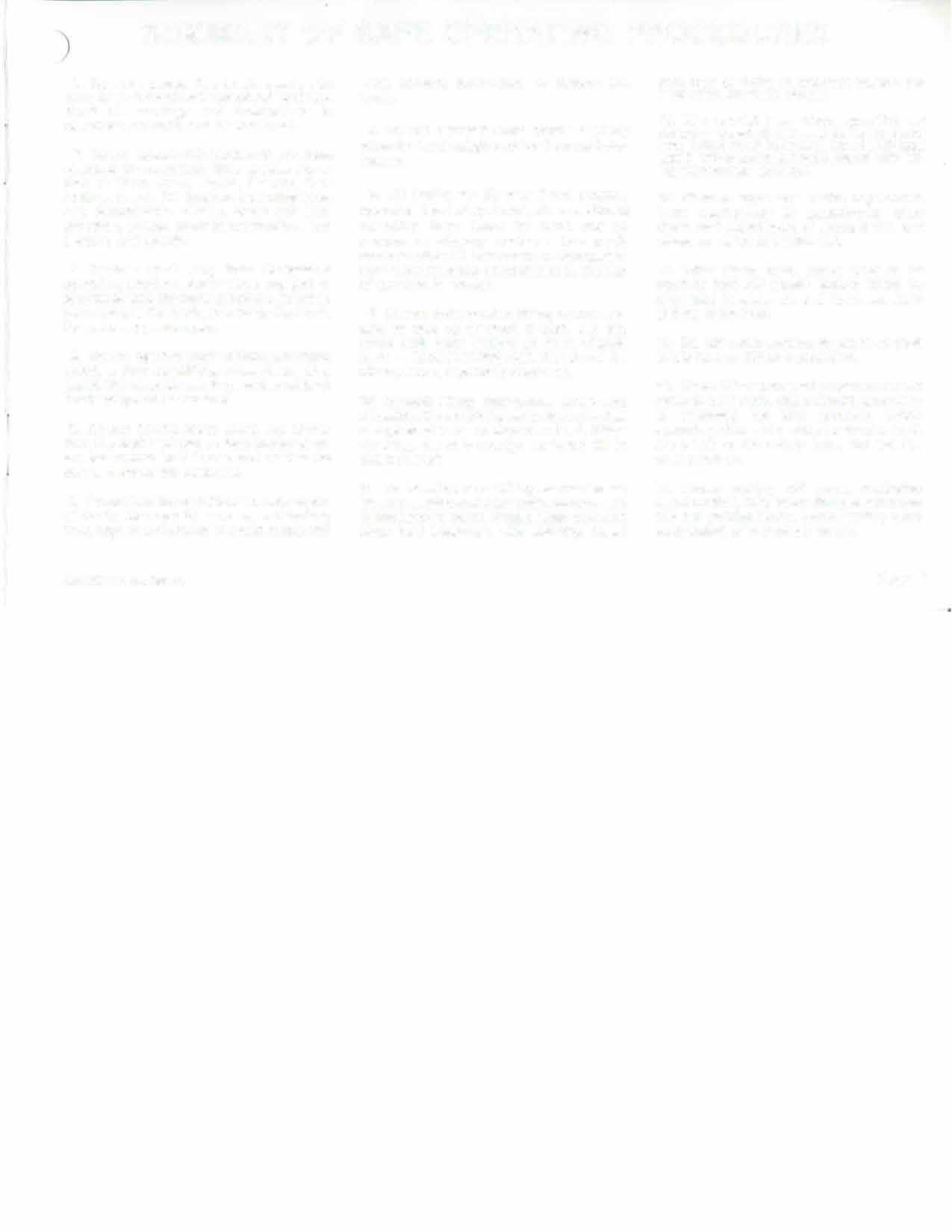
2 minute read
Drive Axle and Wheels
1. Do not operate this truck unless you have been trained and authorized to do so. Read all warnings and instructions in operator's manuals and on this truck.
2. Do not operate this truck until you have checked its condition. Give special attention to Tires, Horn, Lights, Battery, Controller, Lift and Tilt Systems including forks and attachments, chains, cable and limit switches, brakes, steering mechanism, fuel system, and guards.
3. Operate truck only from designated operating position. Never place any part of your body into the mast structure, between the mast and the truck, or outside the truck. Do not carry passengers.
4. Do not operate truck without overhead guard, unless conditions prevent use of a guard. Use special care if operation without overhead guard is required.
5. Do not handle loads which are higher than the load backrest or load backrest extension unless load is secured so that no part of it could fall backward.
6. Do not handle unstable or loosely stack• ed loads. Use special care when handling long, high or wide loads to avoid losing the
Code: 01-414, Rev. Dec. 83 load, striking bystanders, or tipping the truck.
7. Do not overload truck. Check capacity plate for load weight and load center information.
8. Lift trucks will tip over if not properly operated. Start, stop, travel, steer and brake smoothly. Slow down for turns and on uneven or slippery surfaces that could cause truck to slide or overturn. Use special care when traveling without load as the risk of overturn is greater.
9. Elevate forks or other lifting mechanism only to pick up or stack a load. Lift and lower with mast vertical or tilted slightly back - NEVER FORWARD. Watch out for obstructions, especially overhead.
10. Operate tilting mechanism slowly and smoothly. Do not tilt forward when elevated except to pick up or deposit a load. When stacking, use only enough backward tilt to stabilize load.
11. Travel with load or lifting mechanism as low as possible and tilted back. Always look in dlrection of travel. Keep a clear view and when load interferes with visibility, travel with load or lifting mechanism trailing (except when climbing ramps). 12. Use special care when Qperating on ramps - travel slowly, and do not angle or turn. When truck is loaded, travel with load uphill. When truck is empty, travel with lift· ing mechanism downhill.
13. Observe applicable traffic regulations. Yield right-of-way to pedestrians. Slow down and sound horn at cross aisles and wherever vision is obstructed.
14. When using forks, space forks as far apart as load will permit. Before lifting. be sure load is centered and forks are completely under load.
15. Do not allow anyone to stand or pass under load or lilting mechanism.
16. Never lift or transport personnel on the forks of a lift truck. Use a manlift specifically designed for this purpose. When operating rider order selector trucks. hook the chain to the safety bars, and put the safety belt on.
17. Before getting off truck, neutralize travel control, fully lower lifting mechanism and set parking brake. When leaving truck unattended, also shut off power.



